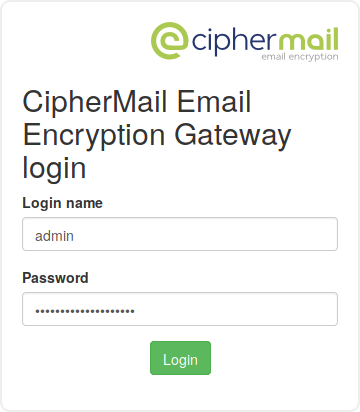CipherMail Gateway
Note
This guide provides in-depth information about the CipherMail gateway and assumes that the gateway Virtual Appliance is used or that the gateway is installed using the deb or rpm packages.
The CipherMail email encryption gateway is an email server (MTA) that encrypts and decrypts your incoming and outgoing email. Because the CipherMail gateway functions as a general SMTP email server, it is compatible with any existing email infrastructure and can easily be placed before or after existing email servers. The gateway is typically installed as a “store and forward” server. Email is therefore only temporarily stored until it is forwarded to it’s final destination.
The CipherMail gateway currently supports three encryption standards: S/MIME, OpenPGP and PDF encryption. S/MIME and OpenPGP provides authentication, message integrity and non-repudiation and protection against message interception (using encryption). S/MIME and OpenPGP uses public key encryption (PKI) for encryption and signing. PDF encryption can be used as a light-weight alternative to S/MIME and OpenPGP. Using PDF encryption allows senders to take an email plus attachments and automatically created a password protected PDF.
Attention
Certain features are only available with the professional or enterprise edition of the CipherMail gateway. If a feature is only available in the professional or enterprise editions then the icon will appear next to it.
Assuming the gateway is using IP address 192.168.1.2, you can login to the admin pages by opening the following URL in your browser https://192.168.1.2 (replace with the correct IP address).
Note
If the CipherMail gateway was installed using the rpm or deb packages, i.e., not using the Virtual Appliance, the default URL should be https://192.168.1.2:8443/ciphermail

The CipherMail gateway by default uses PAM authentication. You can login with the root acount or any system account which is member of the wheel group or the sudo group.
Tip
Additional non-PAM login accounts can be added, or PAM authentication can be disabled, after logging into the Web GUI.
Note
It can take some time to login after a restart because the web application must be initialized upon first login.